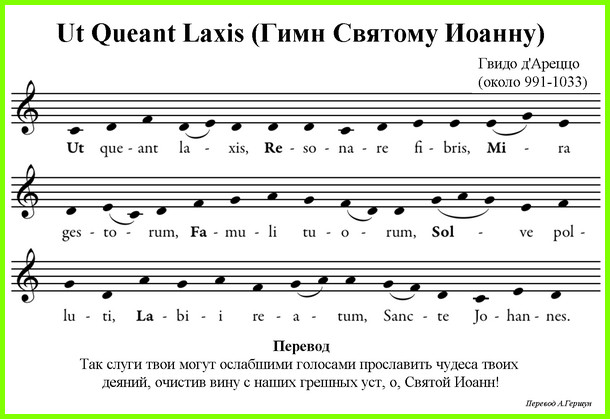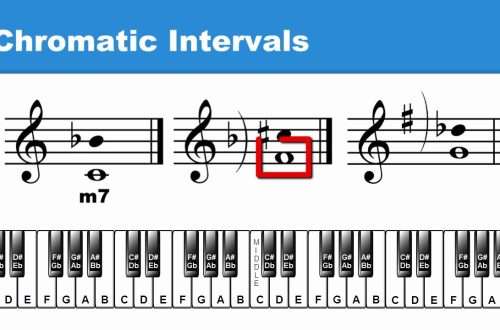
Origin of note names and history of notation
Contents
The origin of note names and the development of notation in general is a very interesting story. The fact is that the syllabic names familiar to us – DO RE MI FA SOL LA SI first appeared only in the Middle Ages in the XNUMXth century. Does this mean that before there were no notes at all? Not at all.
Earlier in European music, for example, letter designations of sounds were common – first based on the Greek and then on the Latin alphabet. But the letters are quite inconvenient to sing aloud, and besides, with the help of letters it was difficult to write down a polyphonic composition for the choir with the help of letters.
However, the singers in the choir preferred a completely different way of recording music. They recorded melodies with special badges, which were called NEVMS. Nevmas were all sorts of hooks and curls that helped the singers to remember those chants that they already knew by heart.
Alas, it was impossible to fix the melody accurately with neumes, they only approximately indicated the general nature and direction of the melodic movement (for example, to move up or down). But you can’t keep all the music in your memory? And the singers of church choirs had to learn a lot of music. After all, many different holidays are celebrated in the church, and for each holiday there were their own chants, their own melodies. I had to find a way out…
Invention of Linear Notation
And the way out was found. True, not immediately. First came up with something like this. Letters were placed over some neumes, that is, their height, thus, as it were, clarified. But from this, the records became cumbersome, the texts of chants, neumes and letter designations of notes mixed up with each other, flickered before my eyes. Many recognized such a system of recording as inconvenient.
The great discovery was made by a monk known as Guido of Aretino. He decided to relieve the singers of at least one inconvenience, and instead of letters denoting sounds, he came up with drawing lines. Each line meant a note, at first there were two such lines, then there were four of them. And neumes were placed between the lines, and now any singer knew exactly in what range he should sing.
Over time, the neumes evolved into square notes. It was much more convenient to read such notes, the musical text became more neat and visual. And the notes themselves were given new names. And again this merit belongs to Guido Aretinsky.
How did the syllabic names of notes appear?
Guido of Aretino, or as he is sometimes called Guido of Arezzo, borrowed the names of the notes from an old church hymn dedicated to St. John the Baptist. In this Latin hymn, the singers praise a famous saint and ask him to cleanse their lips of sin so that they can praise his miracles with pure voices.
However, for us, it is not the content of the anthem that is of greater interest, but its musical and poetic structure. The hymn consists of seven lines, and the melody of each line all the time begins a tone higher than the previous one. It so happened that the first six lines begin with six different notes. These six notes are named after the first syllables of the text of each line of the anthem.
Let’s finally get acquainted with the text of this hymn:
Ut let them relax Resonar fibers Mira of conduct Fayour mules Saltand polluti Labii’s liability Sin the past IOannes
As you can see, the first six lines begin with the syllables UT, RE, MI, FA, SOL, and LA. Sounds like modern sheet music, doesn’t it? Don’t let the very first syllable fool you. It is, of course, inconvenient for singing, and therefore in the XNUMXth century this inconvenient UT was replaced by a more melodic DO, which we sing now. There is a quite plausible point of view that the name of the note DO comes from the Latin word DOMINUS, which means – the Lord. However, no one has yet been able to either confirm or refute this hypothesis.
And the name of the seventh degree of the scale – SI – also appeared a little later. It was formed from the initial letters of the words St. John, that is, from the seventh line of the text of the same hymn. Here is such a story.
By the way, you and I have the opportunity to look at the musical notation of the very medieval hymn from which the names of the notes are formed, and we can even listen to it.

One erroneous hypothesis about the full names of notes
Recently, on the Internet, in particular, on the Facebook website in different groups and on the walls of users, you can often see a record that says that the full names of the notes are completely different. Namely:

You, dear readers, as bearers of the light of truth now know for sure that this theory is wrong, so you should not be misled in this regard. And besides, you can tell others how things really are. And you can do it right now if you share a link to this article on your page of any of the social networks. After all, the world must know the truth!




